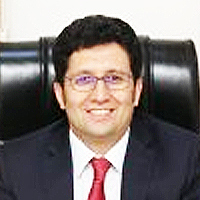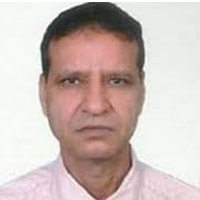Distinguishing Traditional and Internal Craze Lines in Human Enamel
Published on: 18th September, 2024
Objectives: This study aims to introduce and differentiate between traditional craze lines and a newly identified type of line in enamel, termed an “internal craze line.” This novel classification enhances diagnostic precision and carries significant clinical implications for treatment strategies. The goal is to provide a clear description of these two types of lines, discuss their unique clinical implications, and highlight their differing appearances and staining characteristics, contributing to improved understanding and management of enamel anomalies.Method and materials: Four extracted teeth exhibiting visible and internal craze lines were selected and examined using a stereo microscope to observe the structural characteristics of the lines. Cross-sections of the coronal parts of the teeth were prepared to document the differences between traditional craze lines (extending from the dentin-enamel junction [DEJ] to the enamel surface) and internal craze lines (originating at the DEJ but terminating midway through the enamel). Additionally, intraoral observations were conducted under high magnification to identify the visual differences between the two types of lines, noting that traditional craze lines can be stained while internal craze lines cannot.Results: Microscopic examination revealed two distinct types of lines: traditional craze lines extending from the DEJ to the enamel surface and internal craze lines terminating within the enamel. Intraoral observations confirmed that these lines could be distinguished under high magnification. Traditional craze lines appear as continuous lines reaching the enamel surface and can be stained, whereas internal craze lines are shorter, do not extend to the surface, and cannot be stained.Conclusion: The identification of internal craze lines presents significant clinical implications. Differentiating between traditional and internal craze lines can enhance diagnostic accuracy and inform treatment decisions. Recognizing internal craze lines might indicate different etiologies or risk profiles compared to traditional craze lines, influencing preventive and therapeutic strategies in dental practice. Further research is needed to explore the prevalence, causes, and long-term impacts of internal craze lines.
Anatomo-clinical and Etiological Profile of Nephropathies Biopsied in the Nephrology Department of the Thies Regional Hospital (Senegal)
Published on: 30th September, 2024
Introduction: In many developing countries, particularly in Africa, the use of renal biopsy (RB) in clinical nephrology is severely lacking. The objectives were to describe the anatomoclinical and etiological profile of these biopsied nephropathies, as well as the factors associated with the etiology of the nephropathies.Patients and method: This was a retrospective descriptive and analytical study from 1 April 2020 to 30 October 2022. The patients were selected from the renal biopsy register of the nephrology department of the Thiès Regional Hospital. Sociodemographic, clinical, biological, and histological parameters were studied.Results: 75 renal biopsies were included. The mean age was 33.3 ± 14.8 years, with a male predominance (65.3%). The main indications were nephrotic syndrome in 50.67% of cases. RB was adequate in 82.7%, inadequate in 13.3%, and borderline in 4%. Glomerular nephropathies predominated, with focal segmental glomerulosclerosis (FSGS) in 34.7%, membranous nephropathy (MN) in 17.3%, minimal change disease (MCD) in 10.67%, extracapillary glomerulonephritis (ECGN) in 5.3% and lupus nephritis (LN) in 3.9%. Thrombotic microangiopathy (TMA) was found in 9.3%. Chronic tubulointerstitial nephropathy (CTIN) accounted for 5.3% of all RB and acute tubular necrosis (ATN) for 4%. The etiologies were primary in 48%, secondary in 28%, and undetermined in 24%. In the bivariate analysis, the etiology was correlated with the mean SBP (p = 0.023), the mean level of hemoglobin (p = 0.028), the levels of GFR (p = 0.017), and the type of kidney disease (p = 0.000).Conclusion: Glomerular nephropathy was more frequent and FSGS was the most common histological lesion found. Primary causes predominated. Associated factors were identified to improve patient management.
Changes in Private Psychiatric Outservice Related to SARS-CoV-2 Pandemic
Published on: 8th November, 2024
The SARS-CoV-2 pandemic, which began in late 2019, initially manifested with acute respiratory symptoms, including bilateral pneumonia, and later emerged as a systemic disease. This brief report assesses changes in the clinical profiles of psychiatric outpatients before, during, and after the pandemic’s most severe periods, focusing on mood, anxiety, and cognitive symptoms. Data from a private psychiatric facility in Rome reveal that both pandemic-related stressors and SARS-CoV-2 infection itself may contribute to enduring affective and cognitive symptoms in both older and younger adult subgroups. Notably, during the pandemic, older patients showed elevated psychopathology scores (BPRS-24) compared to younger individuals. In the post-pandemic period, younger adults exhibited increased positive symptoms on the PANSS Positive subscale, suggesting a gradual worsening in symptoms post-pandemic ( = 0.47). Cognitive assessments (MMSE and PM38) further highlighted fluctuating performance over time, with older adults showing two distinct declines during the pandemic and in 2024. This work underscores the importance of sustained mental health interventions to address the pandemic’s psychosocial and neuroinflammatory legacy. This perspective also considers new data on the CNS effects of “toxin-like peptides” synthesized by microbiome bacteria.
Analysis of Psychological and Physiological Responses to Snoezelen Multisensory Stimulation
Published on: 25th November, 2024
This study evaluates the effects of two months of regular snoezelen therapy on anger-hostility (AH), assessing both psychological and physiological indicators before and after the intervention. Using the Profile of Mood States (POMS-2), the research measured changes in anger-hostility levels and stress responses, comparing pre- and post-intervention data. At baseline, participants exhibited relatively high levels of anger-hostility, with psychological scores averaging 40.14 (± 2.46) and physiological scores averaging 42.25 (± 2.71), indicating significant irritability, aggression, and elevated stress responses. After two months of multisensory stimulation in a snoezelen room, participants’ psychological scores decreased to 37.40 (± 2.26) and physiological scores to 39.50 (± 2.01), suggesting improvements in mood and physiological stress. The statistical analysis yielded a p - value of 0.047, indicating that the reductions were significant. These findings suggest that snoezelen therapy can be effective in reducing anger-hostility and associated physiological stress, offering a promising intervention for emotional regulation and stress management.
A Study of Endoscopic and Clinical Profile of Dyspepsia in Afghan Momand Medical Complex & Research Center, Eastern Region, Nangarhar, Afghanistan
Published on: 10th January, 2025
Dyspepsia refers to acute, chronic, or recurrent pain or discomfort centered in the upper abdomen. An international committee of clinical investigators (Rome III Committee) has defined Dyspepsia as Epigastric pain or Burning, early satiety, or postprandial fullness Dyspepsia occurs in 15 % of the Adult population and accounts for 3% of general medical office visits. The descriptive study was carried out in Eastern Afghanistan, Afghan Momand Medical Complex & Research Center, Department of Gastroenterology, during the years 2023-2024. To know the Clinico-Endoscopy of Dyspepsia, for patients who present with investigated Dyspepsia to Gastroenterological OPD & IPD. The study result showed, there were a total of patients 467, and of these patients 230 were Male and 237 were Female. According to the Age, 45 patients were under Age <20, 219 patients were between the ages 21-40 years, 130 patients were between ages 41-60 years and 73 patients were over 60 years of Age. However according to the presentation, 357 patients had Dyspepsia, 59 patients had Dysphagia, 13 patients had Chronic Liver Diseases & Screened for Varices, 3 patients presented after Acid ingestion, 2 patients had Anemia, 11 patients had persistent vomiting and 22 patients had suspected GI-Bleeding. Furthermore in Esophageal findings from a total of 467 patients 34 patients had Esophageal Candidacies, 6 patients had Esophageal Narrowing, 25 patients had Esophageal Growth, 71 patients had Hiatus Hernia, 180 patients had LA Grade A Esophagitis, 21 patients had LA Grade B Esophagitis, 6 patients had LA Grade C Esophagitis, 3 patient had LA Grade D Esophagitis. 16 patients had Lax Lower Esophageal Sphincter, 9 Patients had High-Risk Esophageal Varices, 3 patients had Small Esophageal Varices and 150 patients had Normal Esophagus and in Gastric findings from total all above patients, 4 patients had Antral Gastritis, 50 patients had Corpus Gastritis, 1 patient had Fundal Gastritis, 4 patients had Nodular Gastritis, 199 patients had Pan-Gastritis, 108 patients have Severe Pan Erosive Gastritis, 23 patient had Gastric Erosions, 6 patients had PHG (Portal Hypertensive Gastropathy), 3 Patients had Fundal Varices, 5 patients had Gastric Polyps, 5 patients had Gastric Growth, 2 patients had Pyloric Stenosis, 8 patients stomach not seen due to Esophageal Growth, 67 patients stomach were normal. In the present study there were Duodenal findings from a total of the above patients 48 had Duodenitis, 2 patients had Duodenal Polyps, 2 patients had duodenal ulcers, 1 patient had Duodenopathy, 2 patients had Duodenopathy, 2 patients Duodenum not seen due to Pyloric Stenosis and 413 patients Duodenum were normal. Regarding the habits in our study in which a total of 467 patients were examined 135 of the above patients had snuff habits, 103 patients had smoking habits, 2 patients were Heroin addicts and 227 of the total patients didn’t have any habits (the majority of them were using spicy food, overfeeding, drinking of nonalcoholic beverages, fatty foods, NSAIDs ...) and the higher incidence of Dyspepsia was in Female patients, Also with the age between 21-40 years (43%) patients, Also the higher incidence of Dysphagia 47% were in patients with Age >60 years, the Endoscopy showed that 83% patients had Gastritis also higher incidence regarding the habits 29% had snuff habit and 22% had a smoking habit.
Bifurcations and control studies in Circadian Rhythms in Drosophila
Published on: 7th February, 2025
Bifurcation analysis and Multiobjective Nonlinear Model Predictive Control (MNLMPC) calculations were performed on a model of circadian oscillations of the Period (PER) and Timeless (TIM) proteins in Drosophila. The MATLAB program MATCONT was used to perform the bifurcation analysis. The optimization language PYOMO was used along with the state-of-the-art global optimization solvers IPOPT and BARON for the MNLMPC calculations. The bifurcation analysis revealed oscillation causing Hopf bifurcations while the MNLMPC calculations revealed the existence of spikes in the control profiles. Both Hopf bifurcation points and the control profile spikes were eliminated using an activation factor involving the hyperbolic tangent function.
















